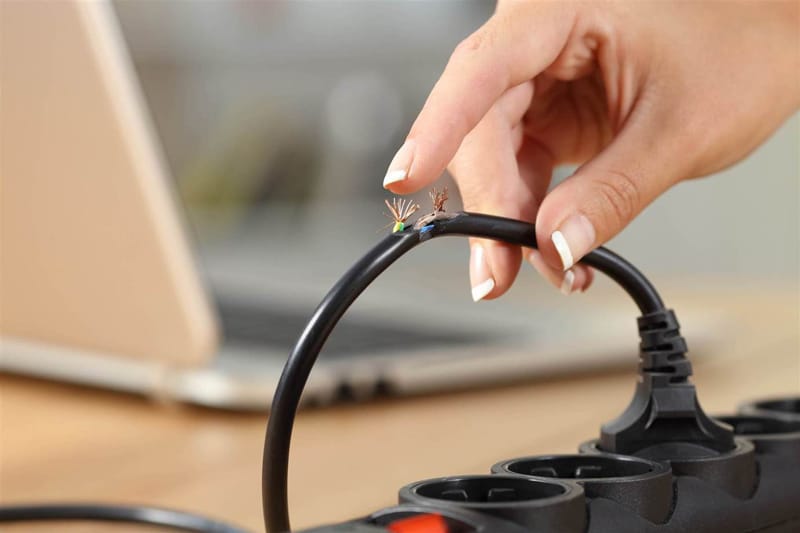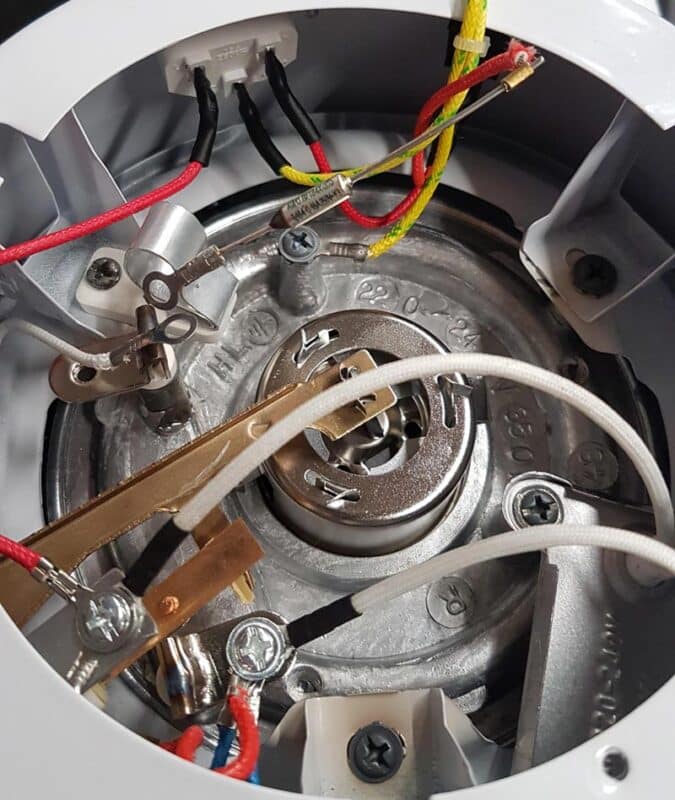Is your rice cooker blowing fuses or tripping breakers? It might not be your appliance’s fault. Try this.
Another day, another pop coming from your circuit breaker. Why did your rice cooker start causing this if it was fine not too long ago? The possibilities are endless.
Rice cookers are supposed to make our lives easier and save us time, so having them fail, blow fuses, and keep tripping breakers as soon as they’re plugged in, can be very inconvenient, and defeat the purpose of owning them.
They might seem simple from the outside, but in reality, there are tons of little, delicate components that make them work and cook our rice to perfection. When one of them fails, it tends to affect all others and compromise your appliance’s functionality.
It’s not all bad news, though. Rice cookers are not simple, but fixing them is. All you need is patience, a multimeter, and some spare parts, if need be. But you can’t go in blind. And you don’t have to.
Below, I’ve prepared a list including the most common causes behind this occurrence, some information regarding how each part works, and what you can do to fix them, when possible.
Ready? Let’s begin!
Your Rice Cooker Might Be Blowing Fuses or Tripping Breakers Due To…
- A bad outlet
- A broken/pinched cord
- Leaking
- A faulty heating element
- A failing thermostat
- A dead circuit board
This list is designed to go from external to internal factors in order to avoid any unnecessary tampering or replacements that might cost you some extra money. If you’re lucky, your problem might be coming from something other than your rice cooker.
#1 There’s a Bad Outlet in Your Kitchen
Watch out for bad outlets
Troubleshooting and DIY’s are all about isolating individual factors and analyzing them thoroughly. If your rice cooker is blowing fuses or tripping breakers, the first thing you want to take a look at is the outlet it draws power from.
I can’t tell you how many times I’ve seen people bend over backwards trying to find what’s wrong with their appliance, only to find the energy source was to blame.
This is more common than you’d think.
If your wall outlet is the culprit, it could be causing your breakers to trip as soon as you plug your rice cooker in or turn it on.
Solution: Carefully unplug your rice cooker, take it to a different section of the house, and plug it back into another outlet. If it works normally and no breakers trip, you’ve solved the mystery, but if it doesn’t, maybe the problem lies with your power cord. We’ll get to that in a minute.
There are many other ways to discard the possibility of a bad wall outlet. If you’re feeling confident, own a multimeter, and want a challenge, you can test it for conductivity.
Just remember to be careful!
#2 Your Power Cord Is Pinched or Broken
Breaking your power cord is easier than you think
If plugging your rice cooker into a different outlet did not do the trick, we can safely move on to the power cord, which, if you think about it, is the next link in the energy chain.
If your rice cooker is blowing fuses or tripping breakers often, your power cord might have sustained some damage. You’d think these wires would be resilient and sturdy, but they’re not. In fact, negligible habits, like keeping them tangled or pressed against a wall, are more than enough to do them in.

Moreover, if smoke came out of your rice cooker right after the first time it tripped a breaker, you might have accidentally pinched the cord while operating it and caused a short circuit.
Don’t panic, though! In most cases, fixing this is very easy.
Solution: Replace the power cord.
I know not everyone has a spare rice cooker cord lying around, but in case you do, repeat the process from the previous point and test the appliance on a new outlet, with the new cable. This should take care of the problem.
In case you don’t have a spare at hand, you can do a quick Google search to find the right one for your make and model. Online marketplaces usually sell them for as little as $10.
#3 Leakage
Leaks can kill your rice cooker
You’re probably thinking, “there are no cracks on my rice cooker, why should there be any leakage?”.
Well, although your pot might seem fine, bear in mind that even the thinnest hairline fractures could be letting moisture pass through. Sadly, you don’t have to be able to see them for them to cause chaos.
If your rice cooker is blowing fuses or tripping breakers when you use it, and you’ve already discarded the possibility of faulty power sources, it’s time to start thinking about water causing short circuits. If your pot is in fact cracked, you’ll have to fix it and open your appliance to let it dry.
Solution: To fix the pot, you can use food-grade epoxy. It works great because it’s moisture and temperature-resistant.
For the internal flooding situation, you’ll have to follow these steps:
- Unplug your rice cooker
- Turn it upside down to expose the screws at the bottom
- Undo them with a screwdriver
- Expose the appliance’s guts and leave it disassembled overnight to dry
If there was in fact a short circuit, you can test the components with a multimeter to see if they’re still viable. If they’re not, you’ll need replacements.
#4 Your Heating Element/Thermal Fuse Is Done For
Keep your thermal fuse functional
Yet another reason why your rice cooker could be blowing fuses or tripping breakers is overheating.
There’s a little component inside it called a heating element, which is responsible for transforming the electrical energy it draws from your wall outlet, into heat. When it fails, it can either not generate any at all, or too much.
Don’t call the firemen yet, though! Every rice cooker has a safety countermeasure built into it called a thermal fuse, which, like any other fuse, will blow and stop electrical continuity to prevent further damage to your appliance.
The problem here is, that you only have one, which means that when it blows, you have to replace it in order to get that overheating countermeasure active once again.
If your heating element caused enough overheating for your thermal fuse to blow, the next possible consequence is damage to your rice cooker’s internal components and even fire. Please do not ignore this symptom.
Solution: Follow the steps from the previous point to expose your rice cooker’s guts.
Once you have done that, find your heating element, and your thermal fuse, and replace them if necessary.
As opposed to a bad heating element, a blown thermal fuse does not need to be tested for conductivity, as seeing the damage is very obvious to the naked eye, just look for blackening and a broken filament inside the glass body.

#5 You Have a Faulty Thermostat
Thermal fuses and heating elements are very important, but they get their orders from your rice cooker’s thermostat. You can think of it as the company boss, and all the other internal components are its employees. Nice analogy, right?
Your appliance’s thermostat is solely responsible for measuring the internal temperature of the components in order to prevent overheating, or determine when it’s time for it to go into “warm mode”. As you can imagine, even the slightest sign of failure on it, can be disastrous.
If your rice cooker is blowing fuses or tripping breakers, there’s a very good chance that its thermostat is no longer functional.
Solution: Follow the steps from point #3 and locate your thermostat. It should be next to the thermal fuse.
Test it for conductivity and replace it if necessary.
#6 Your Circuit Board Is Fried
A fried circuit board is a terrible news
This is the last possible cause of your problem. And if this is in fact the culprit, I have some bad news.
Your rice cooker’s circuit board is its heart and brain. No other components can operate if this is dead. There are many things that could have damaged this part of your appliance, like power surges, short circuits, and leakage.
Normally, if your circuit board is fried, your rice cooker won’t even turn on, so it shouldn’t be tripping breakers, but, on some rare occasions, the damage is not very extensive yet, which allows the appliance to operate for short periods before wreaking havoc all over again.
Try to avoid this as much as possible.
Solution: The answer depends on the status of your warranty.
If you’re still under coverage, please send it to your manufacturer for free repairs, or call one of their technicians.
However, if your warranty is expired, it’s best to throw your rice cooker away, and buy a new one. Why? Because the cost of repairing it and buying a new circuit board is nearly as high as replacing the whole thing.
Hey, chin up. You can probably find a good deal online!
Conclusion
Having your rice cooker blowing fuses and tripping breakers can be a nightmare, especially when you’re not sure where the issue is coming from.
These appliances’ components are heavily interdependent, which means that even the most minimal failure in one of them, can trigger a chain reaction. It is very important that you address any issues with your unit as soon as they manifest themselves to prevent further damage.
Hopefully, one of the items on the list above helped you solve your problem, and your breaker tripping days are over.
Thank you for reading, I hope you found this article useful. Why not keep learning from our other incredible resources below?
Happy fixing!







